Jiří Pergl, Enterpreneur, Czech Republic
Report Kenya 2010 – 1st part
15.1. Nanyuki
In the morning we finished food-sorting and found we have no rice, beans, nor green grams (a kind of local green berry).
I guess we counted wrong, so we return to the center of Nanyuki and buy the rest of the needed supplies so everybody gets the same amount. While the boys are sorting the food, we go with Hellen to set up an account at Standard Chartered Bank of Kenya for all our transactions, such as money transfers from adoptive parents, money to be used for various purposes (school, doctor, hospitals, etc.) and also so we comply with the requirements of Kenya’s government, which likes nothing more than to oversee any transactions where money is involved. Just to set up an account for an organization like OMDC in Kenya you need five people. Only I and our lawyer can withdraw money. Others must undersign and supply photos, ID and documentation certifying where they live. One really funny part is that the bank does not make copies for you, and to do so you have to run to the shop across the street; the machine they have must be one of the first ones ever produced and it produces shabby copies. If the bank does not accept the result, only then will they use the new Minolta copier they have right there on the desk. We spent five and a half hours in the bank to start one account. Coffee or water? Are you mad? This is Kenya! The fact is that they fill in everything by hand, and they spend ages gluing the photos to the documents. This I can accept. But the copying ordeal really tested my resolve.
That afternoon, after a phone call, we went to visit a local architect. Why? As I said, I wanted to build new children’s home in Doldol and I intended to come trough. I put forth my idea to the architect about a home for 60 kids, including a school, church, kitchen, lounge, bedrooms, washrooms, and a fence. I proposed a U-shaped complex and he informed me that his take is 6% of the complete cost. Needles to say, I flinched. After a long discussion where I carefully explained exactly what the purpose of this project was, he finally had a change of heart and agreed to give us a discount and charged 55 thousand for the complete project. This does not include building inspections (only round stamps for revisions). He claims he also likes children, so I guess we are lucky. I agreed to give him a deposit of 50% (again from my own pocket) and I insisted he finish the whole project in 10 days (I am returning home then). He shook his head, but said it could be done. We shall see.
Now to the children’s home in Nanyuki. We brought a lot of sweets, lollipops and 20 children’s films on DVDs in English. No food here, as I mentioned, the government has started to care about this place and the kids don’t go hungry any more. There are two new residents here, little sisters Brenda and Grace. One of them got here 14 days ago terribly beaten, face bloodied and burned by the blade of a knife that had been heated over a fire. That really got to me and I will try to get the girls in our adoption program. Later we play some games, sing a few songs, take pictures together, pass the sweets around and all of a sudden evening is upon us.
A journalist from Daily News Kenya is visiting our resort and he wants to talk to me. He promises he will do everything to give our organization maximum exposure with the most important local companies (Telefonica Safari, Barclay’s bank and others) that have resources to help us. Hellen is going to take care of that in the future and she will try to get some donations and sponsors for the construction of our orphanage and eventually for its upkeep. The journalist and I talk about the Czech Republic and our plans here in Kenya. How did I get involved, and so on. He tells me about that slaughtered village near Doldol. All the newspapers in Kenya are now writing about this incident. About 10 little girls that survived the carnage and then escaped are mentioned together with some other girls who escaped from marriages they were forced into. Supposedly they ran for 200 km, some of them barefoot, without provisions and water. They made it through the territory of elephants, lions and other wild animals towards Nanyuki. Just before they reached the town, one of the local humanitarian organizations placed half of them into a children’s home in Nanyuki. The second half of the group is being cared for by an Italian organization that runs an orphanage at the outskirts of Nanyuki. Unfortunately both facilities are full and the girls won’t be able to stay there more than three to four days. Such a touching story. We should do something about this. We have already, together with our social worker, come up with something but let’s get to that bit later..
PS – The LG service center still hasn’t called…
16.1. Nanyuki and the Slum in Likii
Today we started with a visit to those 23 adopted children, we bring food and gifts. Because we arranged these visits for the weekend we were sure the children are not in school and all of them will be present. Today we managed to visit 16 adopted children. We have information about how they live, photos and videos where the children are holding photos and gifts in their hands. The caretakers and parents received food donations and they wrote down everything that each particular child might need. It is all pretty much the same – school or preschool fees, uniforms, school bags, books, pencil and pads, food and rent money, sometimes even a bed so the child doesn’t have to sleep in one bed with three or four of his siblings. Those who are unfortunate enough to contract HIV will need specific medication in addition to all the other stuff.
Shortly after the visit to a nine-year-old child, I was in for a shock again. There was always a bunch of kids around our car asking for sweets and gifts, and I gladly obliged. Than I noticed a little girl, about five-years–old, with a backpack holding her four-year-old sister by the hand, with the other stretched towards me. Cyrus asked her in Kiswahili what had happened and she answered that her mother had died and they had no relatives. For the last three days they hadn’t eaten and had been living on the streets. I immediately took them to the local “slum restaurant” and purchased food for them – two kinds of mash, which is bread and milk for toddlers. Seeing how they gulped everything down just showed me they were not lying. The girls were in tears when they sat at the table, but as they ate, smiles were beginning to appear on their faces. I felt so much for them that I prepaid their food for four days at this restaurant and issued a stern warning to the service should they get any funny ideas.
We return to our resort dead tired and go to sleep early. The next day there will be three children in the Likii slum that we must visit and fifteen families with children that are really struggling. I don’t sleep too well, worried about what we are going to do regarding those three kids keeps me awake. I finally come up with a solution but it will have to wait for tomorrow. Good night…
17.1. Nanyuki and the Slum in Likii
In the morning we take off in the direction of the Slum in Likii and go to visit the three adopted children. Again we distribute gifts and obtain information and records. One thing doesn’t add up, though. Some of our adopted children are HIV positive since their birth because of their mother’s blood. Now we are asking about the children’s health and we learn that a new test is negative. That is nonsense! Our OMDC doctor told me that there are isolated cases where a child that is positive at birth can get negative result after six months which does not necessarily means that he is out of the woods. But these kids are five or six years old and there is just no way they all of a sudden become negative! We have to make new and better tests. That will be upon Hellen and our doctor because I will not be around by that time.
Hellen pulled out a list of other kids. Again, sad stories prevail. These include children without parents or who have an HIV positive mother only, or they contacted AIDS at birth, and many other unfortunate cases. They don’t go to school, don’t have enough to eat and eventually they join the glue-sniffing derelicts on the street. We took photos of some of these kids and gave them bags with food. When I return home I will prepare their material so you can adopt them. There is one remaining big bag in the car, it is full of stuffed toys from Chvaletická school. Big smiles all around when we distribute them among the children. Too bad Patrick messed up and did not set up the manual controls on our camera correctly, nearly all of the photos are useless. Hopefully the video will be better.
So, since early morning I have been thinking about those three children and how to solve their precarious situation. First of all we have to find them. When we finally do, they are happy to see me and immediately jump into our car. I ask them where they live and they take me to their pitiful dwelling. It is built of clay, has two broken beds, and the one without any mattress was theirs. No blankets, they keep worm at night by huddling next to each other. You may ask whether it is cold in Kenya? Laikipie province, better yet area around the Mount Kenya, is 2,200 meters above sea level. At night at our resort I use two blankets and still shiver with cold. To take a shower in the morning is quite a challenge. During the day the temperature reaches 30 degrees, but nights are really darned cold here. The temperature at the moment is somewhere between 8 and 12 degrees. A kitchen? Well, the place for the fire and the cooking pot is near one of the beds and some kind of bench with three legs. And that is all. Either way, this is their home. I found the owner of this dump, and asked her how are they doing as far as rent payments. They owe for the last six months. Again I used my own resources, settled the debt and paid for the next six months until I arrive again. I left two bags of food (60 kg) and kindly asked their neighbor, if she could use them to cook for the children. I can’t prevent her from keeping some of the food, but I strongly emphasized that this food is only for the children. Then we distributed lots of sweets again and also some clothes that I brought from the Czech Republic, including one set of baby clothes.
Good work. We are leaving Likii slum with smiles on our faces, going to our resort, and I, for one, am really glad it turned out this way.
18.1. Journey to Doldol
It is morning again and we leave for Doldol. This is the most important part of the whole trip, this is why we are here. First we visit this so-called, municipal office to get the piece of land to build our children’s home, and then we want to see the three Masai girls, our latest adoptions. After conquering a road without pavement where you would not have a chance without a 4×4 with increased ground clearance, we head for the mayor’s office in Doldol. Luck would have it that the mayor has changed in the last six month and the new one is absolutely unaware of our case. This is Kenya and unless you have some iron-clad paper, nothing is granted. A new valuable experience, though. Anyway, we proposed our plan to him, told him about our organization and he was very excited. No obstacles from his side, but we have to register our organization in the provincial office of Laikipia Nord. Our OMDC is registered with Laikipia East. So, if we want to function here, a second registration is needed.
We also learn that Doldol has 2 DC (municipal offices). Again they are split according the cardinal directions. So we get the mayor of the west to join us and visit the mayor of the east 🙂 There we again explain our organization, what are we doing, what our aim is and what exactly we want to build here. I have no idea how important this guy is, we get on really well, on a first name basis, we joke a lot, I tell him about the Czech Republic, the company I have and that from our profit I want to build this orphanage, and so forth. Later we talk about Masai history, about his love of children and how he agrees with the aim of our organization and has no problem with a donation of land. He also shows me his new building that is currently being finished. Called Nasary School it is an elementary institution for kids from preschool to the 6th grade. He will also erect three additional buildings separated by gender, with a dining room and kitchen included. During the week children can sleep here. I was beginning to worry that somebody had beaten me to my plan. But fear not, his project is strictly business; children have to pay for school and the room and board. Laikipe Nord badly needs a project like mine! So after the coming discussion at the city council, it should be no problem to get our piece of land after we register, of course. Hellen has her work cut out for here while I am gone.
Either way, we are leaving the city to see our three adopted children and we have smiles on our faces. Cyrus and Patrick are really excited that the mayor is traveling with us and keeps telling me how great it is that we had run into this gentleman. I am sort of unimpressed, mayor here mayor there. Guys keep taking photos with this man so it finally dawns on me that this is not just any mayor and I ask them who this guy was. It is supposedly one of the most influential people in Kenya and he happens to be the spokesperson for Kenya’s President. He apparently is number three in Kenya’s government and actually is higher than the ministers. His face is in the papers and on TV all the time. Well, my jaw dropped. Absolutely great that we can introduce our OMDC to Kenya’s government in this wonderful way! I will remember this experience for a long time. Either way, at least I know why they had to build additional anmunicipal office for the eastern region 🙂
We arrive at the school on the outskirts of Doldol and this is where our 3 adopted Masai girls are. Change again! The head teacher of the school is a new one. The woman that we gave the school fee money for the two girls last August is no longer here. The current head teacher is unaware of our organization and only one of the girls (Soina Lekianit) still goes to the school. The other two (Nais Lowari a Nolari Moiyale) got expelled because they had no text books. What had happened to those books we found out bit later. I inform the head teacher we will pay the school fee for Soina, Nais and Nolari and that they must be admitted back tomorrow. We give presents to Soina and go to look for Nais. By the way, Soina has grown beautiful dark hair, straight without curls which is highly unusual here. She looks very nice.
To find Nais we have to get some help from a local teacher. We travel about 20 km through the wilderness, among elephants and lions, over terrain that is challenging even for our sturdy 4×4. A small fortress made of thorny cactus plants comes into our view. That’s what I call an effective fence! The thorns are 6 cm long and they penetrate even my Solomon shoes. Three of them are in my leg before I find the entrance. I whimper about the pain and complain about those fine, sharp points staying under my skin. The teacher tells me that sometimes when kids step on cactus barefooted up to 20 thorns need to be pulled from their tiny feet. The child usually cries a little and then goes out to play. Spoiled Europeans cry and seek medical help concerned about poison. So I grind my teeth and get going. By the way, Masai never go to a doctor. No matter what. Not even at childbirth, and that’s why their exact birthday is complicated to find. They know roughly how old they are, but that’s about it. I have to laugh when Nais tells me she was born on Friday but she does not know exactly what year. We come to the house itself. It is made of animal dung, wood and grass. Nais is sitting outside and holds a month-old infant in her arms. I was here in the summer and she was at school, so what happened? I ask her mother and she tells me that that spring she had been sold to marry a Masai for two cows; they simply had had no food… Oh boy… Those Masai! We gave Nais presents and food and told her she should return to school. Nais is gifted and speaks three languages fluently. We arranged with her mother that she would take care of the child while Nais goes back to school. We did a good job here and are very pleased. Returning to my car some local kids are showing me the way so I avoid those awful thorns. Then we are on the way to visit the third of the girls who also left school. Again, she receives gifts and food and she promises the teacher she will gladly join class in Doldol. It’s getting dark, and we are leaving, accompanied by the sounds of Nanyuki wilderness.
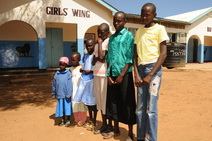 |
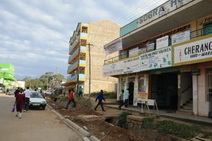 |
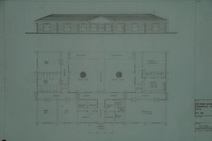 |
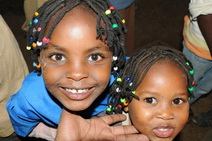 |
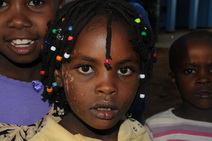 |
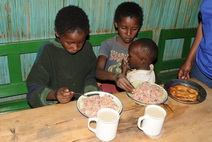 |
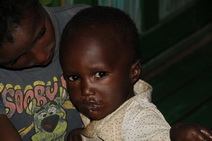 |
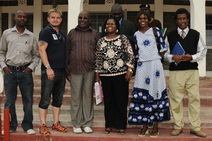 |
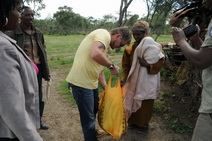 |
